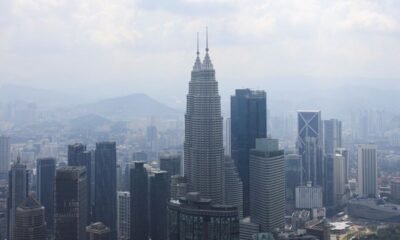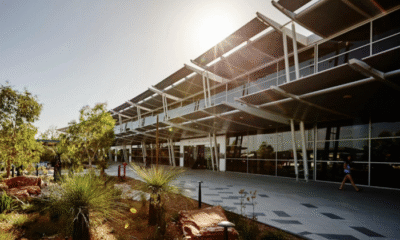Travel Guides & Articles
Malaysia, Thailand, China and India Shape the New Face of Asian Tourism as Visa-Free Travel and Safety Concerns Shift Traveler Flows Across the Region

Sunday, August 3, 2025
The landscape of Asian tourism is undergoing a dramatic transformation in 2025, with Malaysia, Thailand, China, and India emerging as key players in a shifting regional travel narrative. Malaysia has surged ahead as a top destination by offering visa-free access to millions and investing heavily in airport infrastructure and traveler safety, attracting record numbers of international arrivals. Meanwhile, Thailand—long considered the region’s tourism leader—has seen a dip in confidence due to natural disasters, security incidents, and escalating border tensions that have led to widespread booking cancellations. On the other side of the equation, outbound travelers from China and India are driving this change, with Chinese tourists pivoting toward safer and more accessible destinations like Malaysia, and Indian travelers taking advantage of relaxed visa rules to explore the region more freely. Together, these four countries are reshaping how, where, and why people travel across Asia in 2025.
Visa-Free Travel Opens the Door for Growth
A major catalyst behind Malaysia’s rise is its proactive visa exemption policy, which has eliminated bureaucratic barriers for millions of travelers. Visitors from key tourism markets have benefited from smoother and faster entry procedures, helping drive traffic during peak and off-peak periods alike.
Malaysia recently extended its visa-free access for citizens of China, offering a five-year exemption with a future option to extend it through the next decade. This move has streamlined the travel process and positioned Malaysia as an attractive destination for tour operators, families, and repeat visitors. Likewise, tourists from India can enter Malaysia without a visa through 2026, further widening the country’s appeal across the Asian continent.
These relaxed travel policies have been instrumental in converting interest into bookings, especially from travelers seeking convenient, no-hassle getaways.
Airport Infrastructure Scaled for Surge
To meet the growing influx of visitors, Malaysia has expanded and upgraded key infrastructure—particularly at its primary international gateway. Terminal 1 at Kuala Lumpur International Airport has undergone a major improvement valued at RM30 million (US\$7 million). This renovation focused on optimizing passenger flow, expanding facilities, and accommodating rising international traffic.
With enhanced terminal operations, better baggage handling, and streamlined immigration counters, the airport now serves as a more efficient entry point for the millions of tourists choosing Malaysia this year. The improvements have also improved Malaysia’s image as a modern and capable host for long-haul and regional travelers.
Travel Confidence Boosted Through Security Reinforcement
Beyond accessibility, Malaysia’s strategic focus on border security and travel safety has played a key role in maintaining traveler confidence. The government has tightened screening measures and refused entry to large numbers of passengers from flights identified as high-risk. This preventive approach, coupled with increased airport surveillance and a visible security presence, has reduced risks and reassured international arrivals.
The emphasis on maintaining a safe environment has become particularly significant in 2025, with global travelers paying closer attention to destinations that offer peace of mind alongside memorable experiences. Malaysia’s firm stance on security has helped it stand out among its regional competitors.
Thailand Faces Setbacks in a Difficult Year
In contrast, Thailand’s tourism sector has faced multiple disruptions in the early part of the year, affecting its ability to maintain momentum. Several safety-related incidents and environmental crises have eroded traveler confidence, leading to a drop in forward bookings and arrival numbers.
An international incident involving tourists early in the year drew widespread media attention and created concern over traveler safety. Just weeks later, a powerful earthquake struck in late March, causing travel delays, infrastructure challenges, and cancellations across several provinces. These disruptions were followed by tensions along the eastern border, which escalated into military activity, resulting in widespread cancellations at hotels and resorts near affected regions.
As uncertainty grew, some source markets issued advisories, and travelers began to reroute their trips to alternative destinations across the region.
Regional Tourism Landscape Undergoes Realignment
For years, Thailand enjoyed a dominant position in Southeast Asia’s tourism industry, consistently drawing millions with its beaches, festivals, and culinary offerings. However, the events of 2025 have changed the playing field, allowing Malaysia to rise and take center stage.
Malaysia’s ability to align visa policy, airport upgrades, and public safety under a cohesive tourism strategy has proven highly effective. Destinations such as Langkawi, Sabah, Penang, and Sarawak are also drawing more international attention, offering travelers alternatives beyond traditional urban centers.
This broader promotion of diverse locations has distributed tourist traffic more evenly across the country and contributed to record-high occupancy rates in several secondary regions.
A New Tourism Leader Emerges
With global airlines increasing connectivity to Malaysian cities and digital marketing campaigns drawing attention to lesser-known gems, the country is well-positioned to maintain its momentum through the remainder of 2025.
While Thailand remains a strong competitor, its recovery will hinge on how effectively it restores confidence and stabilizes the domestic situation. For now, Malaysia’s coordinated approach has not only earned it the top spot in regional arrivals—it has also redefined what effective tourism leadership looks like in a changing world.
Travel Guides & Articles
Tejasswi Prakash and Karan Kundrra’s Dreamy Travel Moments – The Times of India
Travel Guides & Articles
Peru protest strands hundreds of tourists near Machu Picchu

Published on: Sept 17, 2025 04:31 am IST
PERU-MACHU PICCHU/PROTEST (TV, PIX):Peru protest strands hundreds of tourists near Machu Picchu
Travel Guides & Articles
As RSS pracharak, Modi would travel relentlessly. At 75, that zeal is still intact | India News

NEW DELHI: Close on the heels of his two-day tour of the North-East last week, PM Narendra Modi appears to be preparing for another tour of the region. He is likely to visit Tripura and Arunachal Pradesh later this month, his back-to-back trips, which hardly featured on the travel plans of his predecessors, being another instance that demonstrates his relentless travel zeal, which he has shown since his days as an RSS pracharak, has not dimmed with age or changes in role.These excursions have provided opportunities for him to disseminate his messages, expedite the implementation of schemes, and gather feedback.On Wednesday, he will mark his 75th birthday in MP, launching welfare schemes, in keeping with his plank of inclusive development.Modi’s journeys have been an integral part of his politics. In 1990, he helped organise the Somnath-Ayodhya Rath Yatra, igniting pride amongst Hindus that laid the foundations for BJP to emerge at the national level.The Ekta Yatra (1991-92), which he led along with former BJP chief MM Joshi, and which culminated in hoisting the national flag at Srinagar’s Lal Chowk, symbolised defiance of terrorism.As Gujarat CM, Modi’s Gujarat Gaurav Yatra (2002) restored hope after a devastating earthquake, while the Swarnim Gujarat Yatra (2010) celebrated the state’s progress. “Each journey was a bridge to the people, rooted in their aspirations,” said BJP national media head Anil Baluni.“From his days as an RSS pracharak to his role as India’s PM, Modi’s travels have always been about more than speeches. They are about meeting people where they are, listening to their dreams, and turning their stories into national pride,” the BJP functionary said.The effort has been supplemented by his monthly radio address, ‘Mann Ki Baat‘, an innovation that he has skillfully used to weave individual feats into his larger message of Viksit Bharat.Whether celebrating a tribal woman reviving Santhali handlooms in Odisha or cheering at Pulwama’s first night cricket match, the PM has been actively involved in celebrating such achievements.The Covid pandemic saw him utilise addresses and app-based outreach to transform a public health crisis into a mass movement, fostering unity.His words during security crises, like “ghar mein ghus ke marenge”, have been the vehicles of signaling collective resolve and rally spirits during crises. He stood in solidarity with K Sivan and other Isro scientists when the Chandrayaan-2 mission failed, and has been playing the understanding patriarch-cum-counsellor to anxiety-filled students during his ‘Pariksha Pe Charcha’.
-

 Business3 weeks ago
Business3 weeks agoThe Guardian view on Trump and the Fed: independence is no substitute for accountability | Editorial
-
Tools & Platforms1 month ago
Building Trust in Military AI Starts with Opening the Black Box – War on the Rocks
-

 Ethics & Policy2 months ago
Ethics & Policy2 months agoSDAIA Supports Saudi Arabia’s Leadership in Shaping Global AI Ethics, Policy, and Research – وكالة الأنباء السعودية
-

 Events & Conferences4 months ago
Events & Conferences4 months agoJourney to 1000 models: Scaling Instagram’s recommendation system
-

 Jobs & Careers3 months ago
Jobs & Careers3 months agoMumbai-based Perplexity Alternative Has 60k+ Users Without Funding
-

 Podcasts & Talks2 months ago
Podcasts & Talks2 months agoHappy 4th of July! 🎆 Made with Veo 3 in Gemini
-

 Education3 months ago
Education3 months agoVEX Robotics launches AI-powered classroom robotics system
-

 Education2 months ago
Education2 months agoMacron says UK and France have duty to tackle illegal migration ‘with humanity, solidarity and firmness’ – UK politics live | Politics
-

 Podcasts & Talks2 months ago
Podcasts & Talks2 months agoOpenAI 🤝 @teamganassi
-

 Funding & Business3 months ago
Funding & Business3 months agoKayak and Expedia race to build AI travel agents that turn social posts into itineraries
















